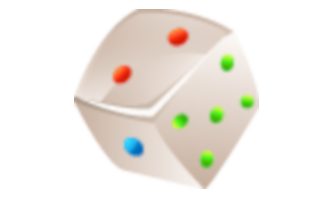Diversity of life
Science, Grade 6
Diversity of life
Study Guide

Diversity of life
Flash Cards

Diversity of life
Quiz

Diversity of life
Worksheets

Diversity of life
Games

Study Guide Diversity of life Science, Grade 6
❮
1
/
3
❯
DIVERSITY OF LIFE What Is Life? There are many characteristics that scientists use to determine if something is alive. The characteristics are very specific and are applicable to all of the different species that exist on our planet. We are surrounded by life almost everywhere a human can go on our planet. Appreciating life is important and studying different species is vital to understanding our environment. Characteristics of Living Organisms There are certain characteristics of all living organisms on our planet. They: • Reproduce • Use energy • Grow and develop • Respond to their environment • Have similar chemicals, and • Have cellular organization. Water and rocks, for example, are considered to be nonliving, but have living organisms within them. Cells are the basic building blocks of all living organisms. © Copyright NewPath Learning. All Rights Reserved. Permission is granted for the purchaser to print copies for non-commercial educational purposes only. Visit us at www.NewPathLearning.com.
Needs of Living Things Living organisms must continually meet four basic needs to stay alive. They must have a living space, water, energy, and stable internal conditions. Plants are autotrophic feeders and animals are heterotrophic feeders. Why Classify? The classification system is critical to life science because of its usefulness in determining where a particular species belongs in accordance to all of the other species that exist. Without the classification system that is in place there would be mass confusion in the scientific community. Classifying organisms allows there to be structure and organization to science and the information that scientists discover. Lesson Checkpoint: Why do scientists classify living organisms? What is Binomial Nomenclature? Binomial nomenclature is a two-part naming system, with the first part being the Genus and the second part being the Species. The system clarifies an organism’s scientific name and its relationship to other species. A taxonomic key is a method used to classify organisms by dividing them into different categories at each step in a series of steps. © Copyright NewPath Learning. All Rights Reserved. Permission is granted for the purchaser to print copies for non-commercial educational purposes only. Visit us at www.NewPathLearning.com.
Levels of Classification There are different levels of classification that narrow in on a particular species. The relationship between organisms gets closer and closer the lower the level of classification. There are eight levels used in the classification system. The correct order from the highest level is: Domain, Kingdom, Phylum, Class, Order, Family, Genus, and Species Six Kingdoms of Life There are a total of six different Kingdoms in the classification system. The names of the six different Kingdom’s are as follows: Animals (Animalia), Plants (Plantae), Archaebacteria, Eubacteria, Fungi, and Protists. © Copyright NewPath Learning. All Rights Reserved. Permission is granted for the purchaser to print copies for non-commercial educational purposes only. Visit us at www.NewPathLearning.com.
